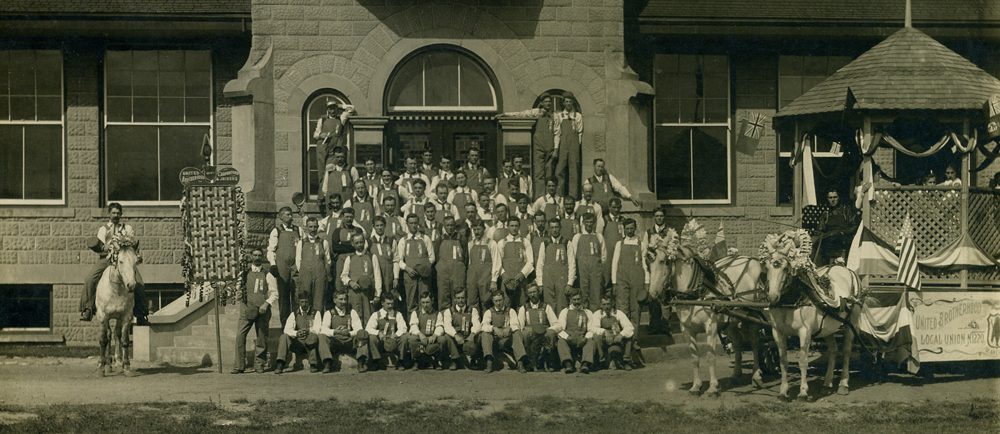Unions

United Brotherhood of Carpenters & Joiners Local 1220 in front of the Crow’s Nest Pass Coal Company office, Labour Day, Fernie on Labour Day May 1, 1909.
Western Canada’s coal industry saw conflicts between management (supported by all levels of government) and miners. Strikes in Lethbridge mines in the late 1890s — that brought no benefits — demonstrated that miners could not compete with management without organization. The United Mine Workers of America (UMWA) targeted Canadian mines. They had a particular appeal for immigrants since their constitution stated the intent: To unite in one organization, regardless of creed, color, or nationality, all workers eligible for membership. Recruitment materials were translated into a number of languages including Italian.
District 18, covering southeastern British Columbia and southern Alberta, was chartered in 1903. Between 1903 and 1914, it waged a series of struggles with management to assert miners’ rights. The UMWA wanted a closed shop requiring all miners to be union members; management preferred an open shop in which miners would be hired regardless of union affiliation.
Some of the region’s miners became increasingly radical and called for nationalization of the industry. Some, under the influence of Russian revolutionary leaders, even called for the destruction of capitalism.
District 18 supported the notion of One Big Union not based on traditional craft lines, that would, therefore, be stronger in bargaining (passed March 1919 by western labour leaders in Calgary). Support for the Winnipeg General Strike (May 15 to June 25) was strong among Italian miners. The 1915 Coal Creek mine pay slip for Mike Albo showed a $1.45 deduction for UMWA membership from total earnings of $9.90 for a 4-day work week.

